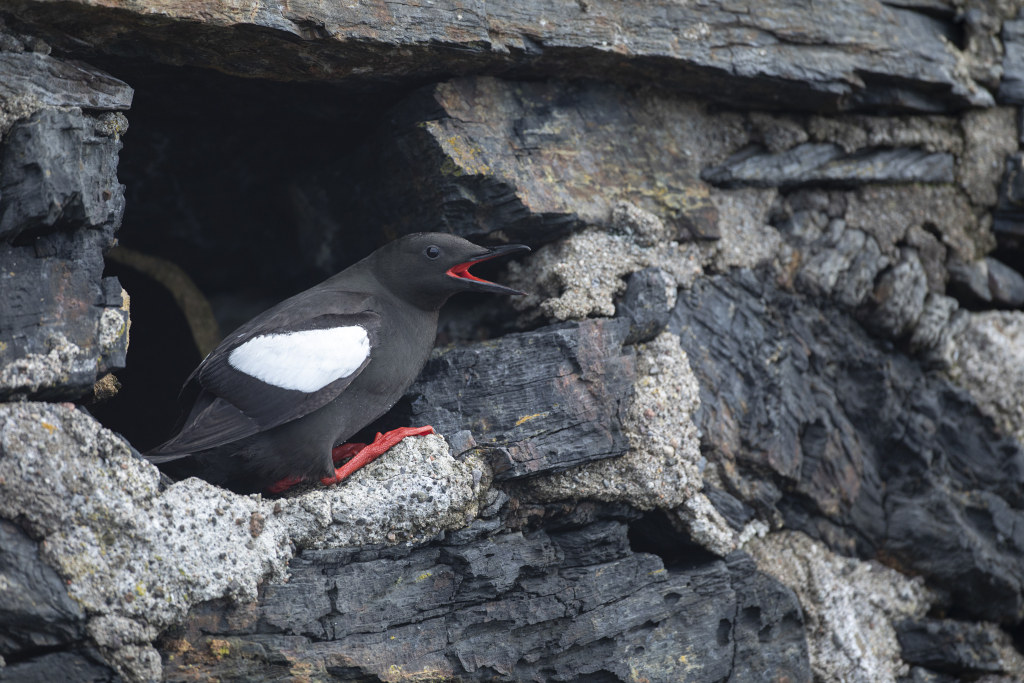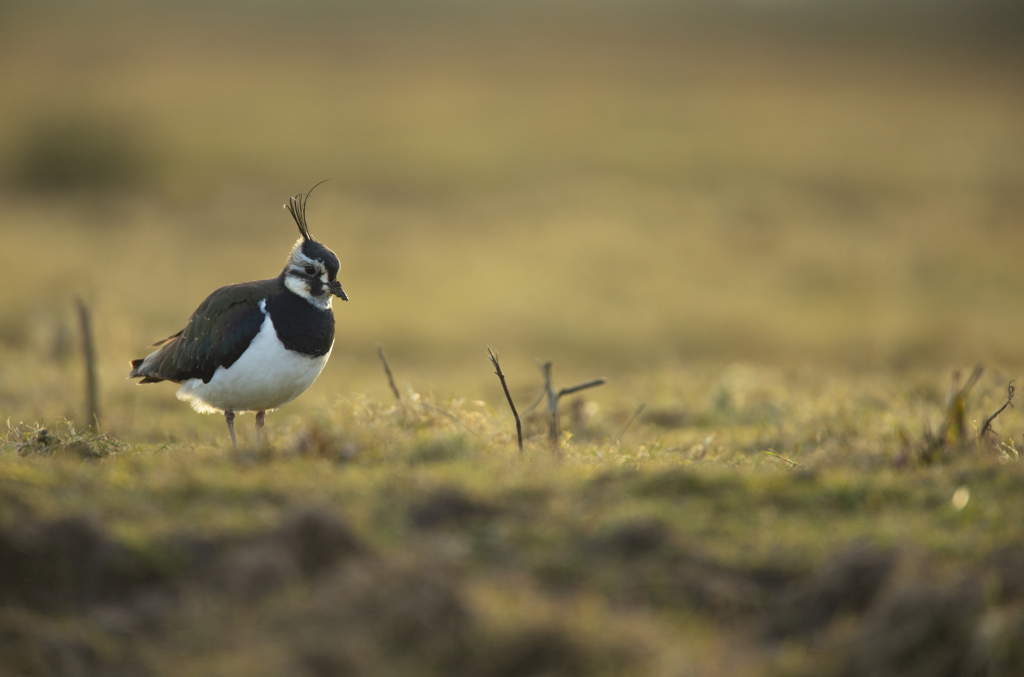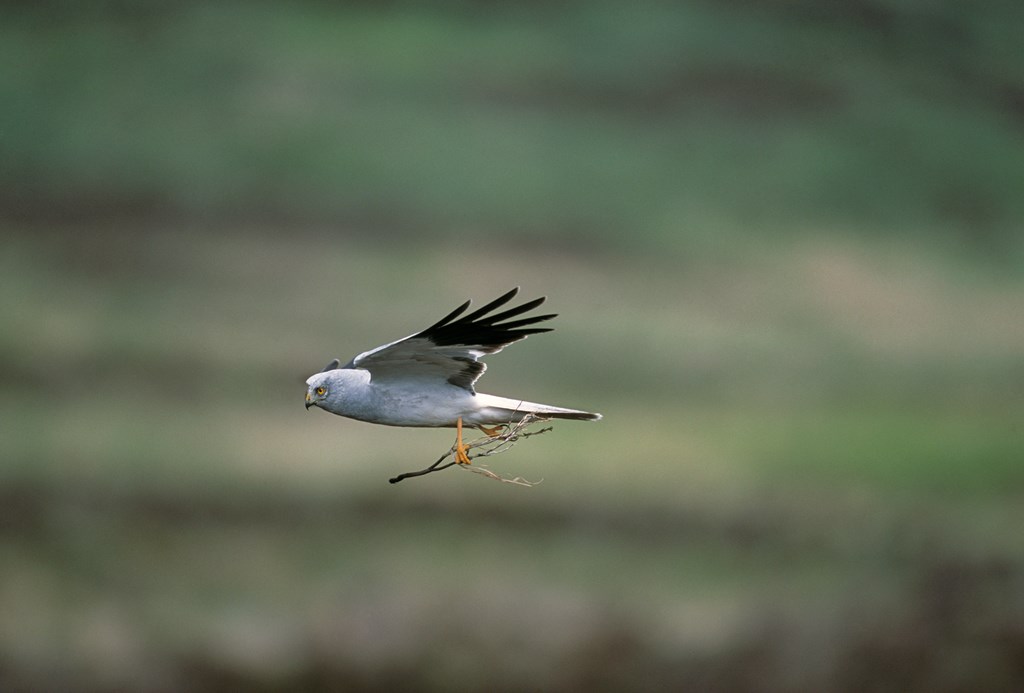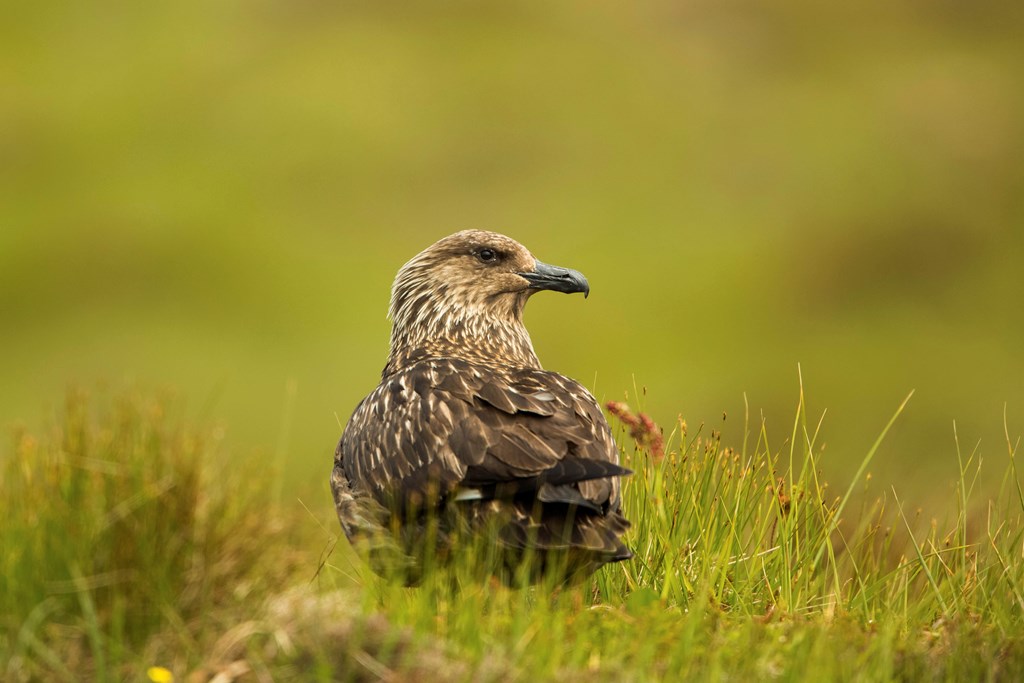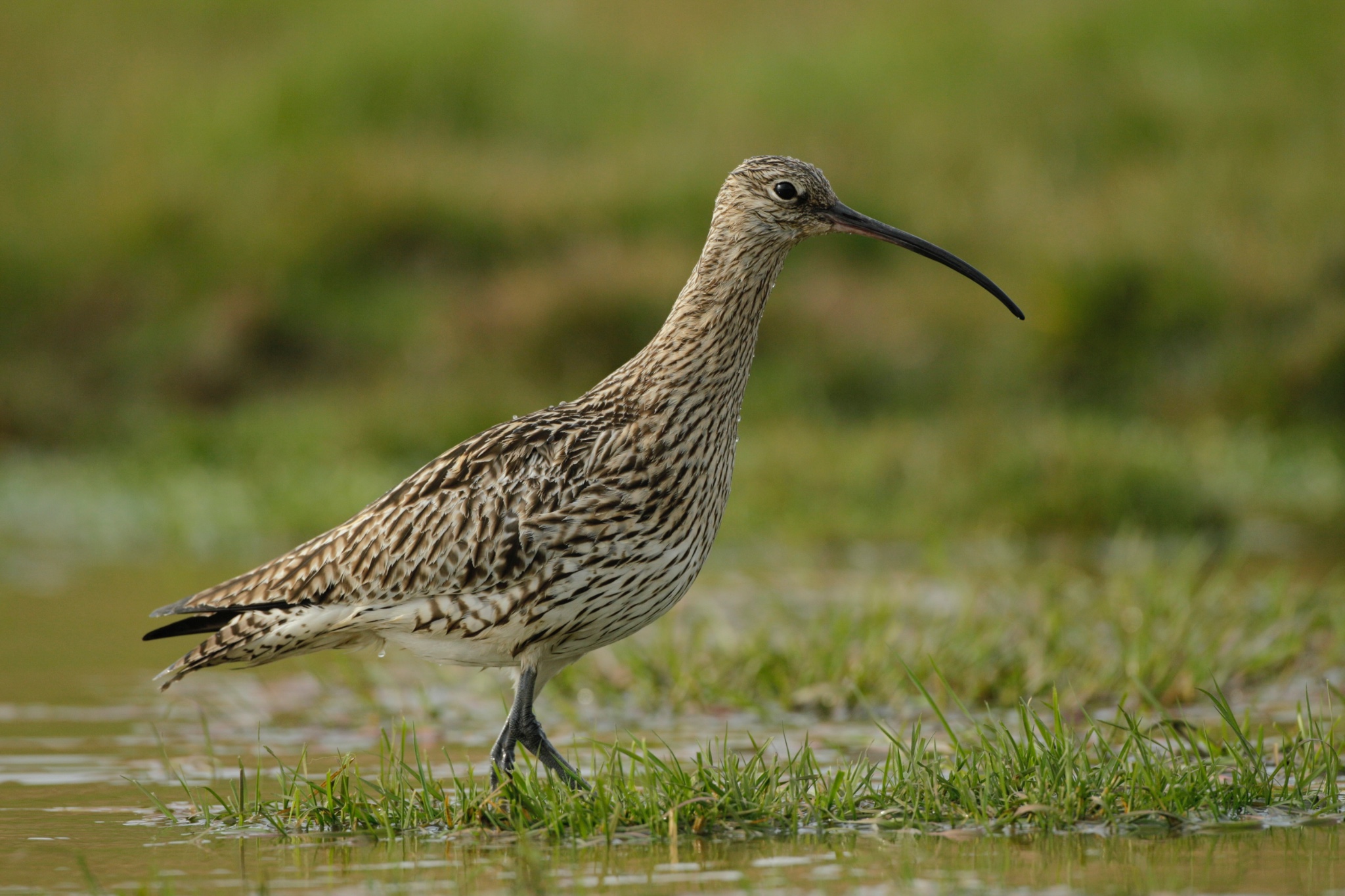5. Black Guillemot ‘Tystie’
“You might hear their quiet ‘tsseee’ calls as they gather together close to our shores for breeding. They’re one of the first to return to Orkney to do this. They don’t nest in dense colonies like our other seabirds, instead they’re found all around the coast. 15% of the UK’s breeding population of Black Guillemot’s are found in Orkney!”


